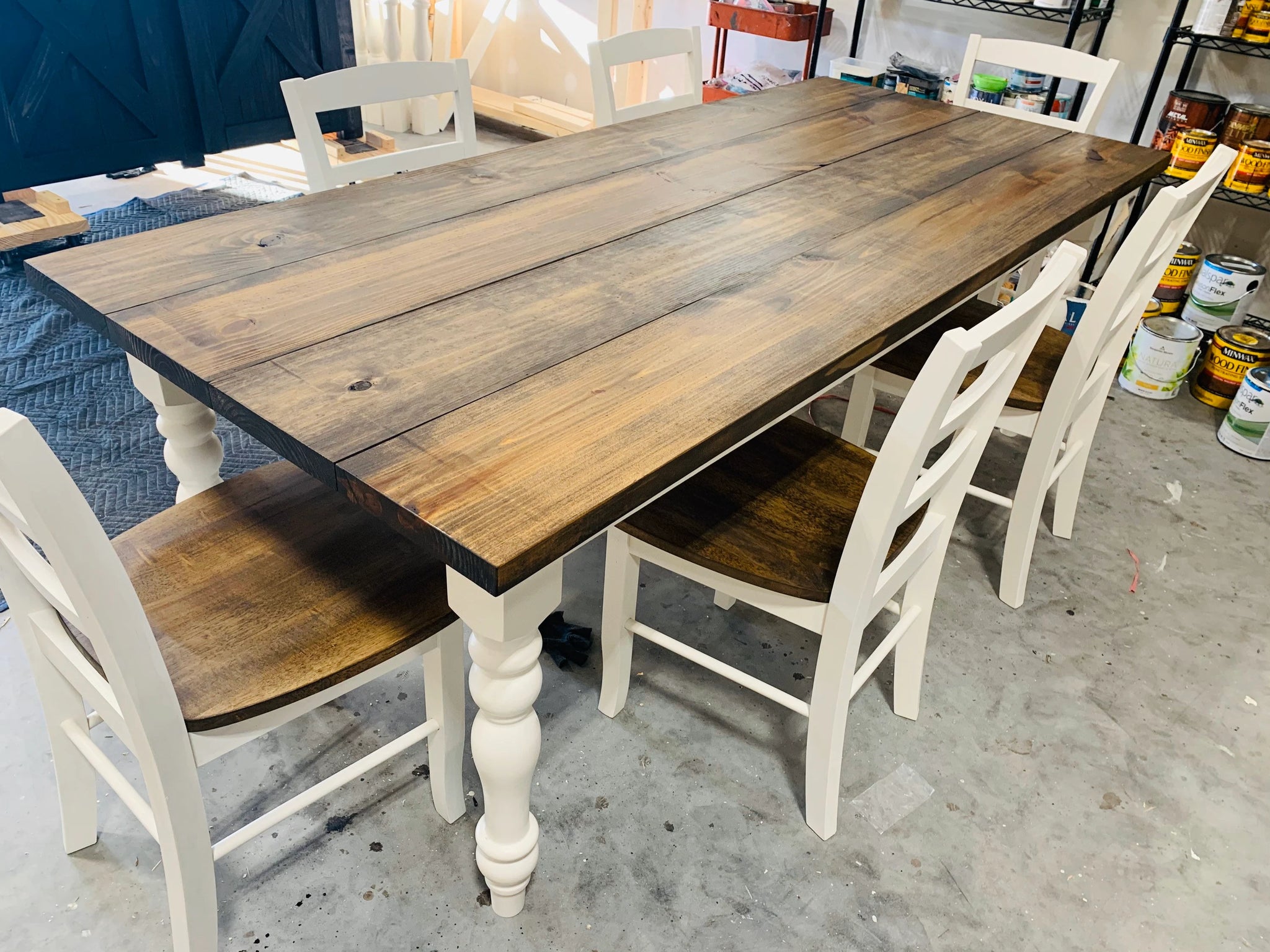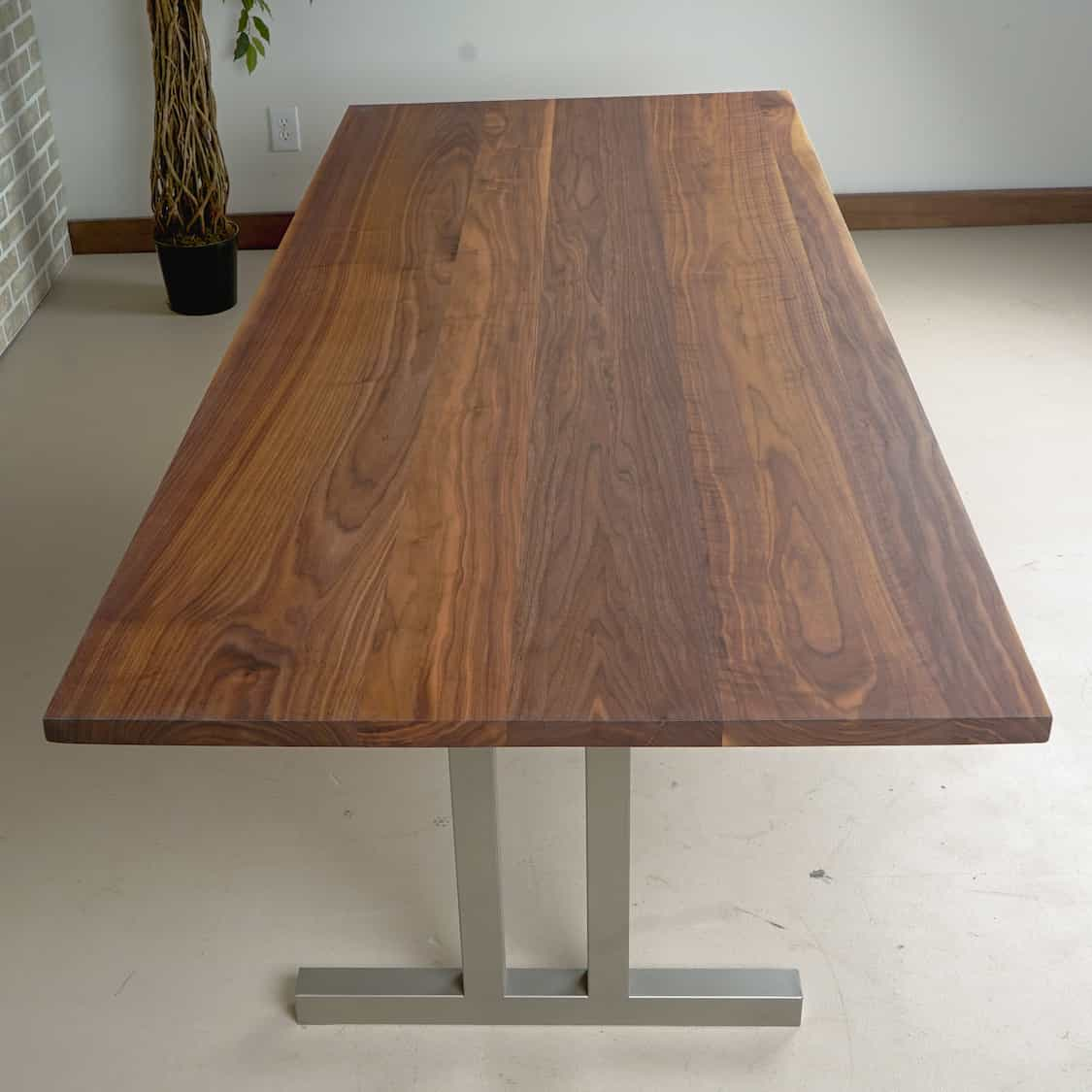A Guide to the Various Kinds Of Dining Table Legs Wood Available Today
When thinking about the structural and aesthetic components of eating tables, the choice of wood for table legs plays a critical function in enhancing both style and capability. Comprehending these distinctions not just aids in making an educated decision but likewise discloses just how the best selection can affect the overall ambiance of your dining room.
Oak Table Legs

In addition to their physical residential or commercial properties, oak table legs use amazing stability. This makes certain that the table continues to be durable, also when sustaining hefty items. The convenience of oak permits different leg styles, consisting of tapered, directly, or transformed styles, boosting the table's total design. Oak can be finished in several means, from all-natural oil to stained finishes, giving options that match individual preferences.
Ecological considerations also favor oak, as it is extensively readily available and sourced sustainably in several areas. Overall, oak table legs are a useful and elegant selection, combining performance with classic style, making them a preferred option for dining space furniture. Their enduring high qualities ensure they continue to be a staple in homes for several years ahead.
Maple Table Legs

One of the considerable advantages of maple is its resilience. It ranks high up on the Janka hardness range, making it resistant to scratches and damages, which is essential in high-traffic dining locations. Dining Table Legs Wood. Additionally, maple's security makes sure that it is much less susceptible to contorting with time, maintaining its structural honesty
In addition, maple can be quickly tarnished or painted, allowing house owners to attain the wanted visual without endangering on top quality. Its natural ability to soak up surfaces implies that it can accomplish an abundant gloss, improving the visual charm of any kind of eating room.
Walnut Table Legs
Walnut dining table legs exude a timeless style that enhances both timeless and modern interiors. Popular for their rich, dark tones and striking grain patterns, walnut legs create a magnificent centerpiece in any kind of dining area. Their flexibility allows them to complement a selection of tabletop materials, including glass, marble, and timber, making them an optimal choice for diverse style visual appeals.
Toughness is another essential advantage of walnut. This wood is understood for its strength, providing durability that holds up against daily usage while keeping its visual appeal. The all-natural oils in walnut additionally give a level of water resistance, making it suitable for family members events and entertaining.
In terms of design, walnut dining table legs come in different styles, from minimalist and streamlined to ornate and typical. Dining Table Legs Wood. This versatility enables home owners to discover the perfect match for their existing decoration. In addition, walnut can be finished in a range of spots, permitting modification that enhances the wood's natural appeal
Cherry Eating Table Legs
Cherry dining table legs provide a cozy, welcoming visual that improves the beauty of any type of dining location. Renowned for their abundant, reddish-brown color, cherry timber is prized not just for its elegance yet also for its toughness and security. In time, cherry wood develops a natural aging that grows its color, including personality and class to your dining area.
One of the standout features of cherry dining table legs is their flexibility. This adaptability makes cherry legs ideal for both classy eating tables and more laid-back setups.
In addition to their aesthetic high qualities, cherry dining table legs are structurally audio. The timber's natural resistance to warping and fracturing makes certain that the legs maintain their honesty over time, despite routine use. When purchasing cherry table legs, you not just improve your dining location's aesthetic allure yet also secure a resilient and durable piece of furnishings that can be treasured for generations.

Pine Dining Table Legs
Pine table legs stick out for their light, ventilated look, easily illuminating any kind of dining area - Dining Table Legs Wood. This timber kind, understood for its convenience and ease of access, is a preferred option amongst designers and homeowners alike. Pine's natural grain features a warm, rustic appeal that can enhance various interior styles, from farmhouse to modern
Among the crucial benefits of yearn table legs is their affordability. Contrasted to hardwoods like oak or walnut, ache uses an economical alternative without giving up aesthetics. Its light-weight nature additionally makes it simple to move and rearrange, offering flexibility for eating configurations.
Correct care and see post upkeep, such as using coasters and staying clear of too much moisture, can assist maintain the beauty look here of yearn eating table legs for years to come. In recap, ache is an exceptional selection for those seeking style, cost, and adaptability in their eating furniture.
Final Thought
In recap, the option of table legs crafted from numerous wood types substantially affects both resilience and aesthetic charm. Oak supplies toughness and distinct grain patterns, while maple offers a light, dent-resistant option. Walnut showcases beauty through deep shades, and cherry improves warmth with its aging attributes. Pine acts as an affordable selection, although it demands mindful upkeep as a result of its soft qualities. Each timber kind provides special benefits, providing to varied design choices and functional needs.
When thinking about the building of dining tables, oak eating table legs stand out for their durability and aesthetic allure.While oak dining table legs are celebrated for their toughness and appeal, maple dining table legs provide their own unique benefits Visit Website that make them an attractive option. When investing in cherry dining table legs, you not just improve your dining location's aesthetic appeal yet likewise secure a long-lasting and sturdy item of furniture that can be valued for generations.
Pine dining table legs stand out for their light, ventilated appearance, effortlessly brightening up any kind of dining room.In summary, the option of eating table legs crafted from various timber types dramatically influences both durability and visual appeal.